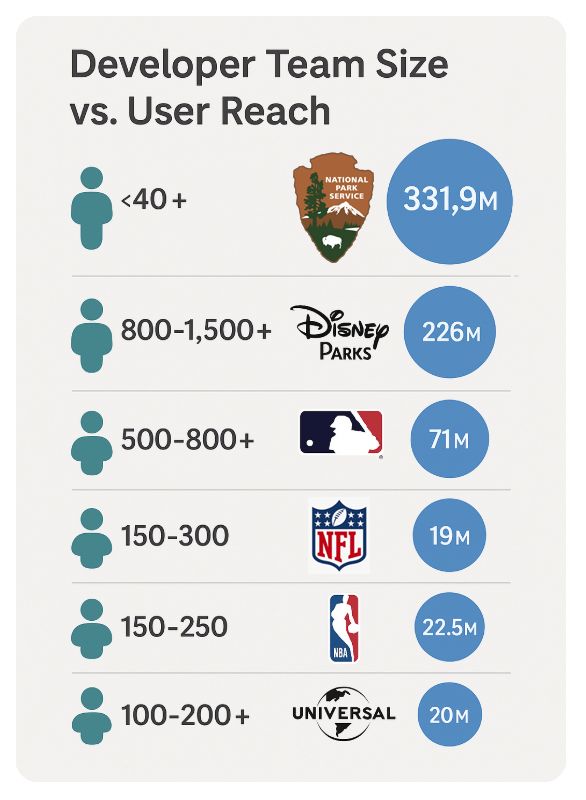Editor's Note: This post was taken with permission from Christie McDonald's LinkedIn post about her teams at the National Park Service (NPS), with minor edits and definitions added. We are proudly re-posting on We the Builders because it illustrates a concise way of expressing what a small, effective team can do. As fellow technologists (and National Park visitors), we want to celebrate great work when we see it.
At the National Park Service, we build and support digital platforms that serve hundreds of millions of people every year—with a developer team smaller than most private-sector development departments.
Our products—NPS.gov, the NPS App, Live Maps, and NPGallery—power everything from trip planning to education, to storytelling and public safety. They're secure, accessible, and constantly evolving.
We operate with:
- DevSecOps* baked into every layer
- CI/CD pipelines** and modern microservices
- Agile delivery with government-grade resilience
- A people-first culture that encourages exploration and growth
Most importantly: we deliver, at scale, for the public. With just 40+ developers, we're holding our own next to the biggest names in tech and entertainment.

Here’s how it stacks up 👇
👥 Visitors in 2024
- National Park Service – 331.9M
- Disneyland Resort – 27M
- MLB – 71M
- NFL – 19M
- NBA – 22.5M
- Universal Studios (Orlando + Hollywood) – ~20M
🌐 Monthly Website Traffic
- NPS.gov – Millions (trip planning, alerts, digital storytelling)
- NFL.com – ~96M
- NBA.com – ~99M
- MLB.com – ~52M
💻 Development Team Sizes (Est.)
- NPS – ~40 developers
- MLB – 500–800
- NFL – 150–300
- NBA – 150–250
- Disney Parks – 800–1,500
- Universal Studios – 100–200
Small team. Big mission. Huge impact.
Public-sector tech can be lean, modern, and high-performing. And I'm proud to be part of the team proving it every day.
Definitions: *DevSecOps: DevSecOps stands for development, security, and operations. It's an approach to culture, automation, and platform design that integrates security as a shared responsibility throughout the entire IT lifecycle. (Source: Red Hat)
**CI/CD Pipelines: CI/CD combines the practices of CI (continuous integration) and CD (continuous delivery or continuous deployment) to automate much or all of the manual human intervention. It encompasses the build, test, and deploy phases, as well as infrastructure provisioning. A CI/CD pipeline allows teams to minimize downtime and release code faster.